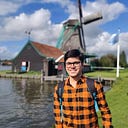Travelog : East Side Gallery, Berlin
The East Side Gallery is one of Berlin’s most historic landmarks that has also been turned into an artistic landmark. The 1.3 km part of the Berlin Wall is the longest part that is still largely intact. The East Side Gallery is visited at all times of the day and night by visitors, locals, and people spilling out of the nearby clubs, such as Berghain or Watergate.
The East Side Gallery is located on the Spree at the former borders of the Soviet and American sector, next to the Oberbaumbrücke, which is one of the most historically important bridges in Berlin. Access via this border crossing was restricted to West Berlin citizens, unlike some other areas that were open to all West German citizens.
Since the fall of the Berlin Wall on November 9th, 1989, the cement segments that remain have stood as something more symbolic than just a wall. With installations in every continent, except for Antarctica, the East Side Gallery is the most authentic existing part of the Berlin Wall. These paintings express revolution, celebration of the change and a new hope for the future.
Here are some of the most famous and iconic graffiti in the East Side Gallery :
The Kiss
The Kiss depicts the infamous embrace between Soviet leader Leonid Brezhnev and East German President Erich Honecker. It took place in 1979 in honour of the 30th anniversary of the East Germany. The mural was painted by Dmitri Wrubel, and under the image is a slogan reading, “My God help me to survive this deadly love…”
Andrej Sacharow
This simple but iconic portrait on the Berlin Wall was painted by Dmitry Vrubel and Viktoria Timofeeva, in honour of Andrej Sacharow. He was a Soviet nuclear physicist, dissident, and human rights activist. Sacharow stood for freedom and liberty, and he died in 1989 a few weeks after the wall fell.
Trabant through the Wall
This iconic mural, painted by Birgit Kinder, shows a Trabant car breaking through the Berlin Wall. The Trabant car is a famous symbol of the Communist East Germany and its most commonly used vehicle. The painting is a reference to this popular car and many East Germans who tried to escape over the Berlin Wall.
The Wall Jumper
This mural, entitled ‘Der Mauerspringer’, meaning the wall jumper, was painted by Gabriel Heimler, in 1989 and later restored in 2009. The wall jumper is not an East German refugee trying to escape to the West, but rather a West German jumping over to the East as a symbolic gesture of freedom…
Thumbs Up
Mikhail Serebrjakow’s mural, entitled ‘Diagonal Solution to A Problem’ depicts a thumb being held up by a chain to hold it in a positive, thumbs-up position. The mural shows the forceful nature of the East German government to preserve Communist ideals in the country.
Human Flow
Berlin artists Kani Alavi painted this haunting yet stunning mural in 1990. The abstract painting depicts Checkpoint Charlie the day the wall fell, with thousands of East German faces, floating from one side through to the West. The faces show a range of different emotions in an effort to portray the mixture of confusion, joy, trepidation, and liberation felt by East Germans heading over to the West.
Das Vaterland
The unique German flag, painted by Günther Schaefer draws from two important historical events in German history. The flag and its ‘pendant painting’ were created to honour the 50th anniversary of the Night of the Broken Glass when Nazi forces in Germany and Austria destroyed Jewish-owned shops. By unifying German and Israeli flags, Schäfer was commemorating the traumatic beginning of Fascism and Communism. The painting lends itself as a protest against extreme regimes and abuses of human rights.
